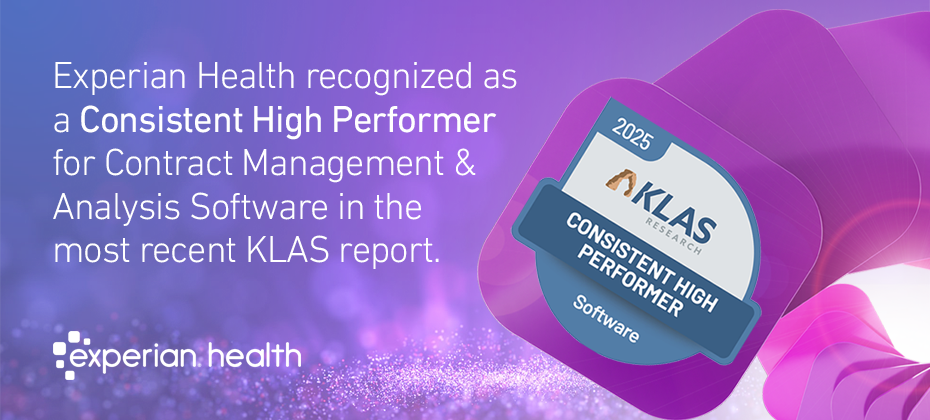
As the saying goes, “what gets measured gets managed.” For healthcare providers, this is a reminder that optimizing the revenue cycle relies on monitoring and reporting on the right metrics. Claims, billing and collections teams will struggle to know which of their activities lead to improvements if they don’t track key performance indicators (KPIs). The question, then, is how to choose the right KPIs. How can providers gain more visibility into their financial performance? Where are the pitfalls that limit the usefulness of the data? This article looks at how revenue cycle managers may find more opportunities to prevent revenue leakage by building a healthcare revenue cycle KPI dashboard populated with the right medical billing metrics.
What is a revenue cycle KPI dashboard?
A revenue cycle or medical billing KPI dashboard is part of a revenue cycle management (RCM) platform. It enables real-time visibility into metrics regarding billing and revenue and is customizable based on the KPIs that matter to each healthcare organization. It centralizes critical information related to patient access, healthcare collections, claims management and payer contract management.
Challenges and pain points in revenue cycle management
The first step in selecting the most relevant KPIs for a revenue cycle dashboard is to identify and understand the thorniest RCM challenges that could be causing dollars to slip through the net.
Here is a run-down of some of the biggest obstacles to effective RCM and possible performance measures that may help track improvements:
1. Inefficient patient access for scheduling and registration
Revenue cycle management begins in patient access. Unfortunately, so do many of the errors and inefficiencies that lead to claim denials and missed payment opportunities. Confusing and disjointed scheduling systems can lead to underutilization of services and no-shows, as well as falling short of consumer expectations for online booking methods.
Online self-scheduling tools make it easier for patients to book appointments so they can start their healthcare journey quickly and conveniently. Cancelled appointment slots can be offered to other patients, to maximize clinician time. Here, it would be useful to track the percentage of unfilled appointments: an increase over time would suggest that patients are finding it easier to book appointments, and confirm better use of doctors’ hours.
Similarly, digital registration options can quell the frustrations that many patients feel when trying to fill out forms ahead of treatment. No-show rates, percentage of patients using online tools, registration error rates and patient satisfaction scores would all be relevant KPIs.
2. Claims and denial management processes that rely too heavily on manual work
From checking payer updates to poring over billing codes, claims management workflows often involve manual tasks that put unwelcome pressure on already-overwhelmed staff. There are many opportunities for errors, which drive up denials and put the brakes on the organization’s cash flow. An increase in clean claim rate and a reduction in the rate of denials would be KPIs to look for on the revenue cycle dashboard.
An end-to-end claims management solution that uses automation and artificial intelligence (AI) to improve accuracy and lift the load on staff can alleviate these challenges. For example, AI Advantage™, leverages AI to predict and prevent denials using the organization’s own historical claims data.
3. Patient collections practices are often inconsistent
Patient responsibility for healthcare costs is higher than ever, so the consequences of poor billing practices are severe. Experian Health’s State of Patient Access 2023 report found that 63% of providers believe patients frequently postpone care because they’re worried about costs. If patients are unsure about what they owe, unable to find financial assistance, or unclear about how and when to pay, the provider is likely to see their accounts receivable metrics and collection rates heading in the wrong direction. Clear bills and convenient ways to pay are key to optimizing patient collections.
Collections Optimization Manager supports better financial decision-making for both patients and providers by screening, segmenting and routing accounts based on payment probability. Users get tailored support from an experienced optimization consultant to select the right KPIs and turn insights into effective action.
4. Actionable insights are often out of reach
RCM analysts may have a wealth of information to interrogate, but they are often tripped up by disparate systems and legacy processes. Critical information in patient access, collections, claims management and payer contract management may be held in different systems and formats, which makes it much harder to see connections.
With revenue cycle analytics tools, providers can make sense of the information they hold, rather than drowning in data. A revenue cycle or medical billing dashboard can enable real-time visibility into the KPIs that matter most while tracking changes over time.
What are KPIs for RCM?
Revenue cycle KPIs are quantifiable measures that illustrate the financial viability of an organization’s revenue cycle. These metrics indicate if healthcare organizations are achieving their financial goals and are effectively managing revenue inflows and outflows.
Specific KPIs will be tailored to the organization’s particular goals, challenges and processes. The quality and availability of relevant data will also play into the selection process, to maximize visibility and insights into the revenue cycle.
In addition to the suggested metrics discussed above, other common KPIs to feature in a revenue cycle dashboard include:
- Days in account receivable
- Aged accounts receivable rate
- Adjusted collection rate
- Clean claim rate
- Claim denial rate
- Claim appeal rate
- Bad debt rate
- Gross collection rate
- Net collection rate
Importance of healthcare revenue cycle KPI dashboards
A revenue cycle KPI dashboard is more than just a handy way to present data. Monitoring an organization’s financial health is critical to its ability to serve patients and attract and retain high-performing employees. A healthcare revenue cycle dashboard can enable providers to:
- Identify if revenue levels are sufficient to keep the organization afloat and know in advance if new strategies are needed to maintain cash flow
- Locate glaring operational efficiencies in RCM that are costing the organization time and money
- Forecast future revenue projections to determine the organization’s ability to expand and invest
- Improve all financial decision-making through better use of data that is already being collected
- Boost patient satisfaction by highlighting opportunities to create a more convenient and transparent financial experience.
Driving efficiency and success through RCM solutions
Once the revenue cycle KPI dashboard is built, RCM teams can get to work on implementing the specific actions needed to tackle those thorny issues discussed above. With Experian Health’s integrated RCM solutions, providers can bring together metrics such as financial performance, billing efficiency and collections rates into one place, to allocate resources more strategically, drive targeted improvements, and accelerate reimbursement. And with these insights, providers are not just managing revenue – they are optimizing for future financial stability.
See how Experian Health’s revenue cycle management solutions, dashboards and drill-down reports can uncover opportunities to prevent revenue loss and boost profitability.


